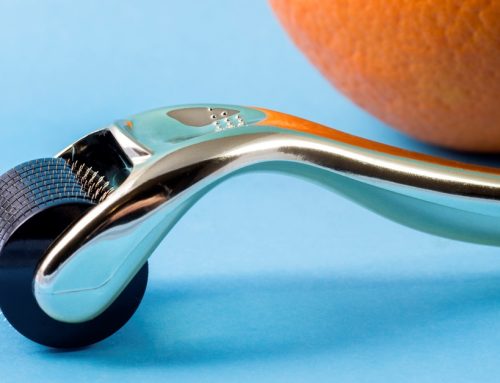If you know the “M” word, then you’re ready to be done with it. Melasma is a type of hyperpigmentation of the skin, usually on the cheeks, forehead, upper lip, and chin.
While there are many great treatments for dealing with pigmentation of the skin – the VI Peel and IPL Photofacial are excellent! – one of my go-tos for melasma is microneedling.
What is Melasma?
Melasma is not fully understood and is caused by many factors. It is usually caused by sun damage, genetics (thanks, Mom!), or hormones.
It most commonly affects women with skin that tans, rather than burns, easily. So while your golden tan was the envy of your teenage friends, now it might be adding to your uneven skin tone.
Melasma is not just limited to your face, either. It can affect arms and chests, too.
There are three types of melasma of this type of pigmentation: epidermal, dermal, and mixed, with epidermal being the easiest to treat. Dermal is the deepest layer of the skin – that’s where the microneedling comes in.
How Microneedling Combats Melasma
Microneedling has grown in popularity in recent years. This treatment is a physical method of addressing melasma, as opposed to some hormonal treatments.
It isn’t simply the action of needles, which promote skin healing and collagen production, that addresses melasma. Microneedling also enhances the transdermal delivery of topicals to treat melasma.
Microneedling needles can penetrate skin up to 2 mm. To give you an idea, your epidermis (the outer skin) can be as thick as 1.5 mm in areas like the soles of the feet. Your dermis – a potential problem area for melisma – is below the epidermis. In thick areas, it can be up to 3 mm thick. A 2 mm microneedling needle can usually reach the dermis to deliver in those needed topicals and stimulate collagen production.
I’ve warned about using at-home microneedling in the past. For one, the at-home kits may not provide the effective treatment you desire. For another, microneedling may not be right for your condition. While microneedling is a great treatment for melasma, it’s not for every case of melasma. If you trigger an inflammatory response with a microneedling treatment at home, you can actually worsen your pigmentation.
A Final Note on Melasma
Melasma always has a chance to recur, especially if patients are not careful about sun exposure. A combination of daily care with microneedling treatments throughout the year can help you look your best.
About Jennifer
Jennifer Curtin is a medical aesthetician, nationally recognized for her expertise in medical skin care. With more than 20 years of experience in medical aesthetics, she is dedicated to the aesthetic industry and has received awards of merit including the International CIDESCO Certification, Assistant Cosmetic Laser Practitioner and National Leadership Award. Jennifer is also an expert in pigmentation treatments and the president of Skintherapy, which is located in the Buckhead section of Atlanta. To schedule an appointment with Jennifer, call 404-358-2961.






